
After much careful consideration, it has been decided not to publish values on this site. “If you try to please everyone, you will end up pleasing no one.” Sellers, of course, like to see high prices, while buyers prefer lower ones. But the main reason for not giving specific figures has to do with Internet auctions. While these auctions have no doubt pushed average values higher, prices seem unsettled at this time, with variations of one thousand per cent or more having been observed in certain instances of recent sales involving identical-appearing pieces. And with we being months behind in restoration work, there just isn't enough time available to adequately research current sales and come up with figures that are fair to sellers and buyers alike, as well as those seeking appraisals for insurance purposes. Nevertheless, we can make an important contribution by showing the novice collector what to look for as far as relative desirability is concerned. For dollar values of specific examples, we recommend:
http://www.antiqueclockspriceguide.com
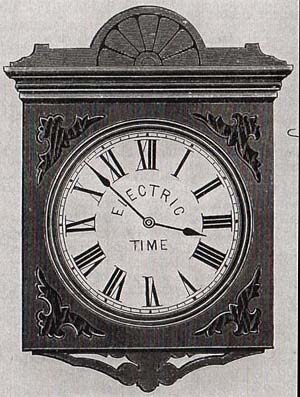
Generally speaking, there are 3 distinct features that add greatly to the desirability of a master clock from the collector's point of view. These are:
Special or fancy case with eye appeal,
Mercurial pendulum-- 3-tube the most desirable,
Pilot clocks-- the more the better, in combination with battery gauge or milliammeter.
A master clock containing a 2, 4, or 6-circuit program as original equipment is only slightly more desirable than an otherwise identical clock that never had one. But the desirability of a clock containing too many pilot clocks to permit the installation of a program in its case is greatly enhanced if it includes a program machine in a separate matching cabinet as originally supplied with the clock.
The ability of a master clock to reset compatible secondaries is not a particularly desirable feature in and of itself; indeed, most of the more sought-after clocks were made before automatic reset systems were introduced. However, some of the automatically resetting systems were operated by motor-wound weight-driven master clocks capable of running through power outages of 12 hours or more. Master clocks of this type are uncommon and fairly desirable.
Of the clocks shown here, numbers 1 thru 6 each have 1 or more of the desirable features indicated above. Picture 7 shows an "entry level" pendulum-type master clock of the commonest variety. The same clock with a 2-ribbon 4-circuit program is equally common. As a rule, collectors will pay high prices only for something more elaborate. Picture 8 shows a flush-mounted master clock. Clocks such as this are thought to be worth only what the parts are worth. Their depth exceeds that of most walls, and their width is greater than the standard distance between studs. In spite of this, a few have been prized enough for collector residence installation!
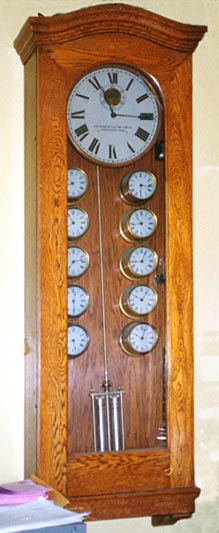
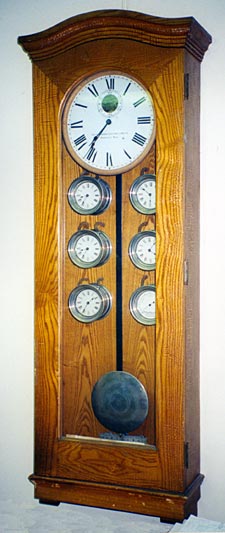


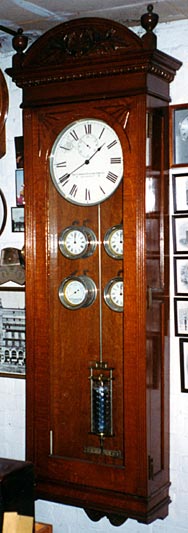


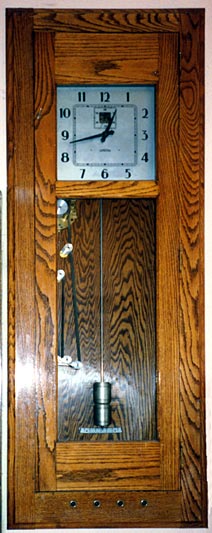
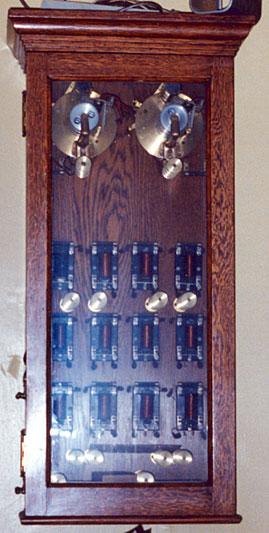
~ ~ ~ ~ ~ ~ ~ ~ ~ ~ ~ ~
Jeffrey R. Wood, creator of the Standard Electric Time Co. (SETCO) pages of clockhistory.com, passed away in August of 2018. I will maintain the SETCO web pages in honor of Jeff, but will not be making any additions or changes, or answering any questions. It is hard to express how much I miss Jeff, his friendship, and his wonderful contributions to Standard Electric and Westclox research.
Bill Stoddard